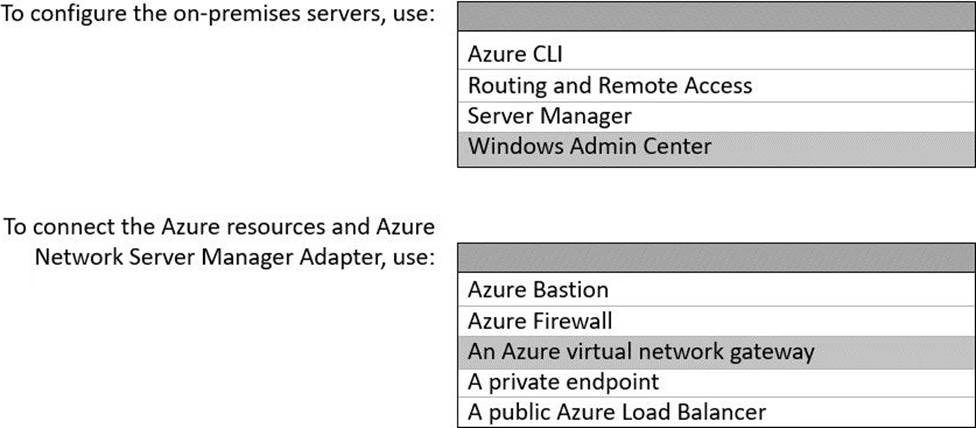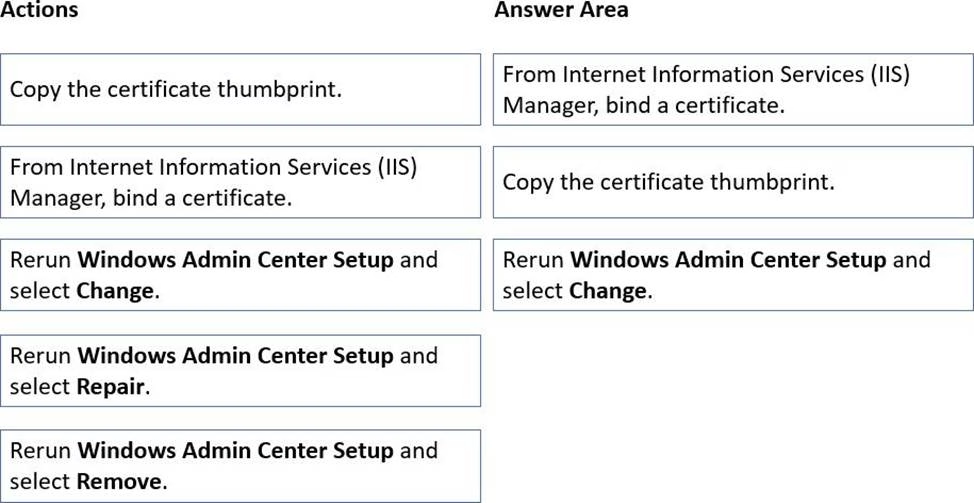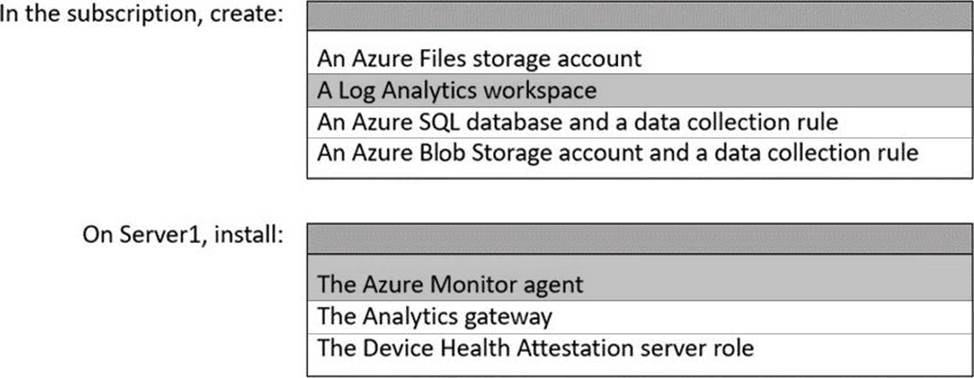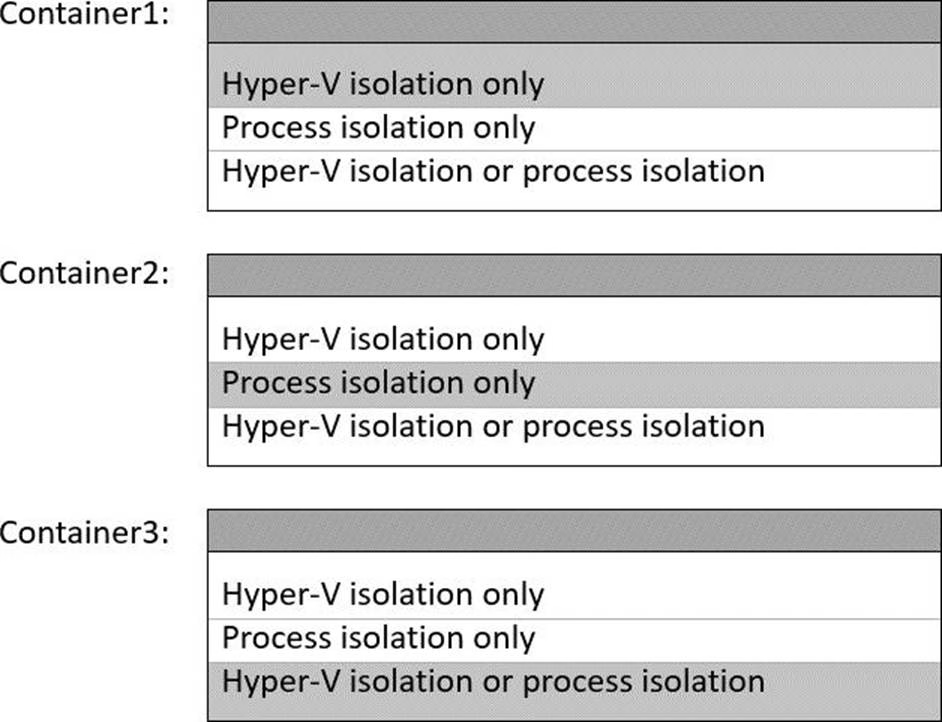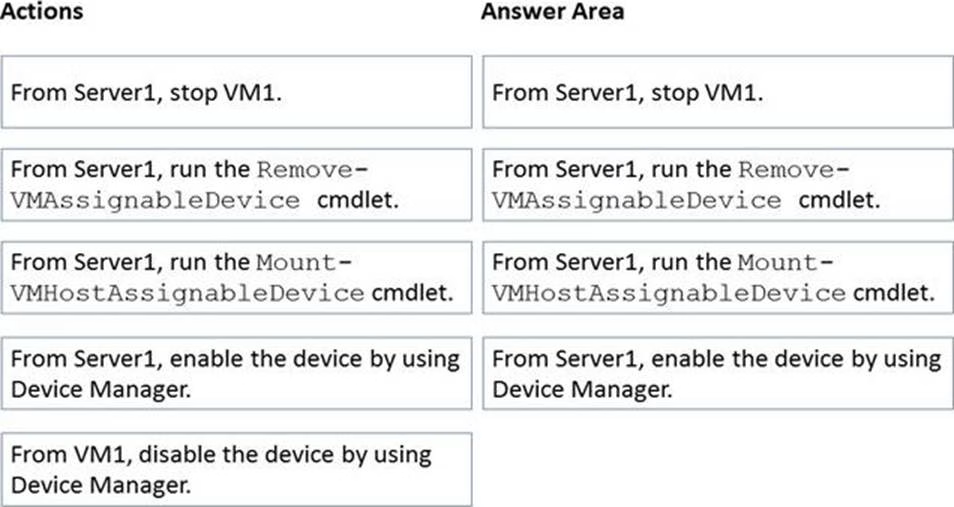Microsoft AZ-800 Administering Windows Server Hybrid Core Infrastructure Online Training
Microsoft AZ-800 Online Training
The questions for AZ-800 were last updated at Apr 05,2025.
- Exam Code: AZ-800
- Exam Name: Administering Windows Server Hybrid Core Infrastructure
- Certification Provider: Microsoft
- Latest update: Apr 05,2025
Your network contains an Active Directory Domain Services (AD DS) forest named contoso.com.
The root domain contains the domain controllers shown in the following table.
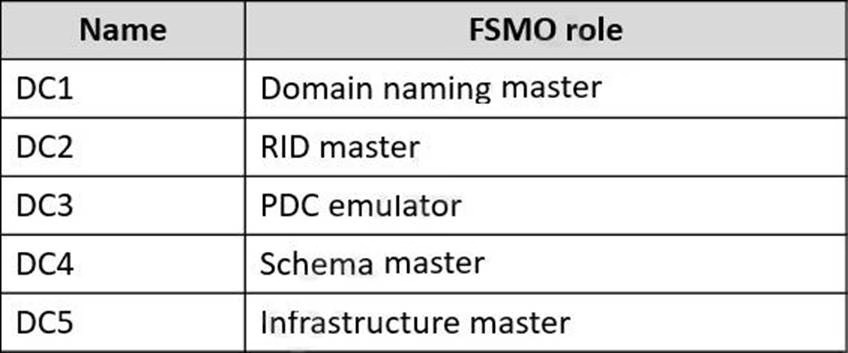
A failure of which domain controller will prevent you from creating application partitions?
- A . DC1
- B . DC2
- C . DC3
- D . DC4
- E . DC5
HOTSPOT
You have 10 on-premises servers that run Windows Server.
You plan to use Azure Network Adapter to connect the servers to the resources in Azure.
Which prerequisites do you require on-premises and in Azure? To answer, select the appropriate options in the answer area. NOTE: Each correct selection is worth one point.
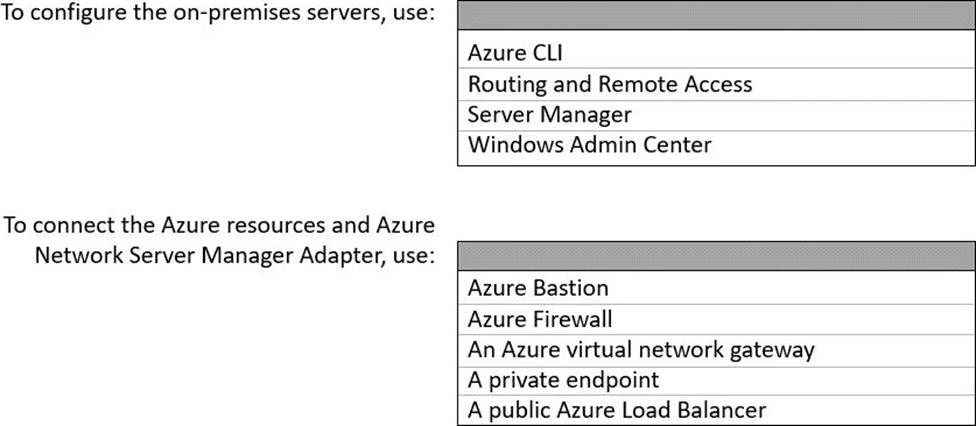
DRAG DROP
You have a server named Server1 that has Windows Admin Center installed. The certificate used by Windows Admin Center was obtained from a certification authority (CA).
The certificate expires.
You need to replace the certificate.
Which three actions should you perform in sequence? To answer, move the appropriate actions from the list of actions to the answer area and arrange them in the correct order.
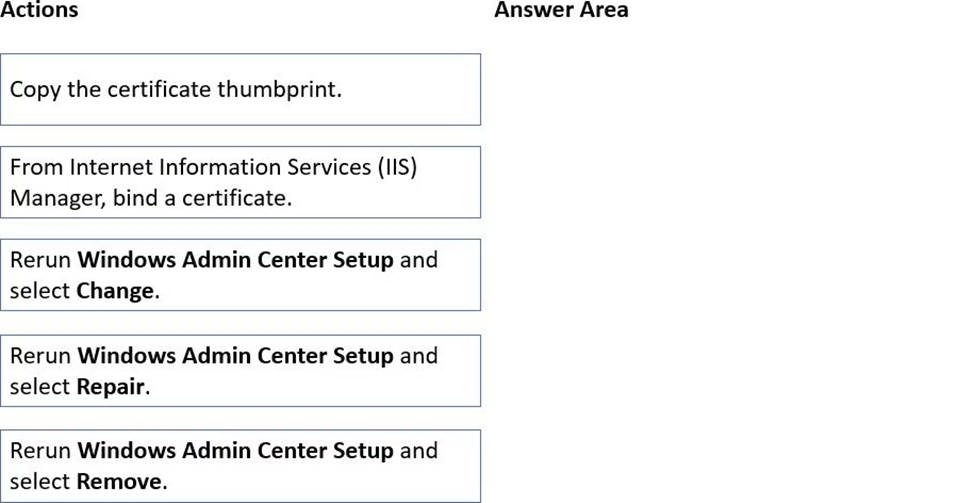
HOTSPOT
You have an on-premises server named Server1 that runs Windows Server and has internet connectivity.
You have an Azure subscription.
You need to monitor Server1 by using Azure Monitor.
Which resources should you create in the subscription, and what should you install on Server1? To answer, select the appropriate options in the answer area. NOTE: Each correct selection is worth one point.

You have an on premises Active Directory Domain Services (AD DS) domain that syncs with an Azure Active Directory (Azure AD) tenant. The domain contains two servers named Server1 and Server2.
A user named Admin1 is a member of the local Administrators group on Server1 and Server2.
You plan to manage Server1 and Server2 by using Azure Arc. Azure Arc objects will be added to a resource group named RG1.
You need to ensure that Admin1 can configure Server1 and Server2 to be managed by using Azure Arc.
What should you do first?
- A . From the Azure portal, generate a new onboarding script.
- B . Assign Admin1 the Azure Connected Machine Onboarding role for RG1.
- C . Hybrid Azure AD join Server1 and Server2.
- D . Create an Azure cloud-only account for Admin1.
You have an Azure virtual machine named VM1 that runs Windows Server.
You have an Azure subscription that has Microsoft Defender for Cloud enabled.
You need to ensure that you can use the Azure Policy guest configuration feature to manage VM1.
What should you do?
- A . Add the PowerShell Desired State Configuration (DSC) extension to VM1.
- B . Configure VM1 to use a user-assigned managed identity.
- C . Configure VM1 to use a system-assigned managed identity.
- D . Add the Custom Script Extension to VM1.
You have an Azure virtual machine named VM1 that runs Windows Server and has the following configurations:
✑ Size: D2s_v4
✑ Operating system disk: 127-GiB standard SSD
✑ Data disk 128-GiB standard SSD
✑ Virtual machine generation: Gen 2
You plan to perform the following changes to VM1:
✑ Change the virtual machine size to D4s_v4.
✑ Detach the data disk.
✑ Add a new standard SSD.
Which changes require downtime for VM1?
- A . Detaching the data disk only and adding a new standard SSD.
- B . Detaching the data disk only.
- C . Changing the virtual machine size only.
- D . Adding a new standard SSD only.
HOTSPOT
You have a Windows Server container host named Server1 that has a single disk.
On Server1, you plan to start the containers shown in the following table.

Which isolation mode can you use for each container? To answer, select the appropriate options in the answer area. NOTE: Each correct selection is worth one point.
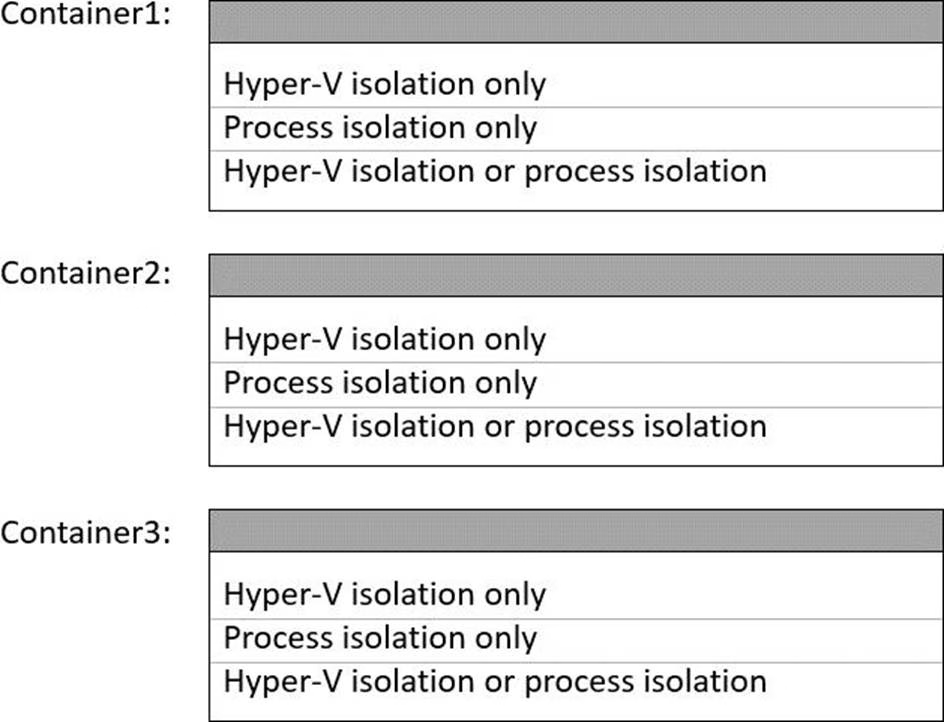
DRAG DROP
You have a server named Server1 that runs Windows Server and has the Hyper V server role installed. Server1 hosts a virtual machine named VM1.
Server1 has an NVMe storage device. The device is currently assigned to VM1 by using Discrete Device Assignment.
You need to make the device available to Server1.
Which four actions should you perform in sequence? To answer, move the appropriate actions from the list of actions to the answer area and arrange them in the correct order.
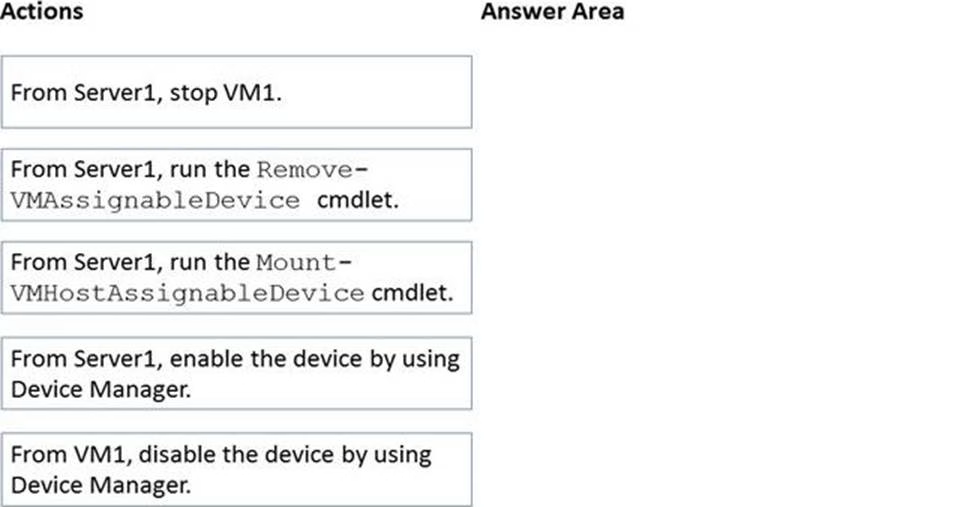
Note: This question is part of a series of questions that present the same scenario. Each question in the series contains a unique solution that might meet the stated goals. Some question sets might have more than one correct solution, while others might not have a correct solution.
After you answer a question in this section, you will NOT be able to return to it. As a result, these questions will not appear in the review screen.
You are planning the deployment of DNS to a new network.
You have three internal DNS servers as shown in the following table.

The contoso.local zone contains zone delegations for east.contoso.local and west.contoso.local. All the DNS servers use root hints.
You need to ensure that all the DNS servers can resolve the names of all the internal namespaces and internet hosts.
Solution: You configure Server2 and Server3 to forward DNS requests to 10.0.1.10.
Does this meet the goal?
- A . Yes
- B . No
Latest AZ-800 Dumps Valid Version with 54 Q&As
Latest And Valid Q&A | Instant Download | Once Fail, Full Refund

